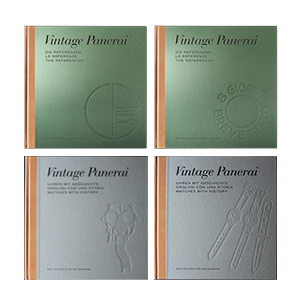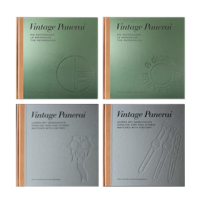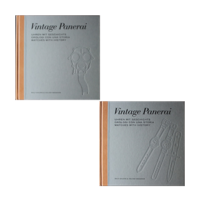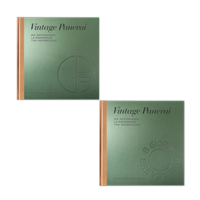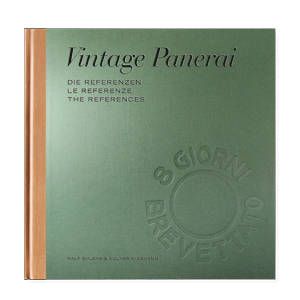Author Archive
A look into our book “The References” 1950’s-1960’s
by Volker on Dec.24, 2023, under Allgemein
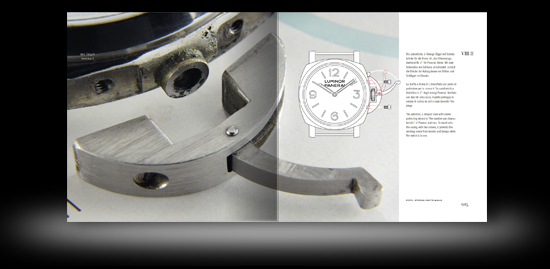
Page 924-925 – the patented, L-shaped lever with crown-protecting device of a Ref. 6152/1.
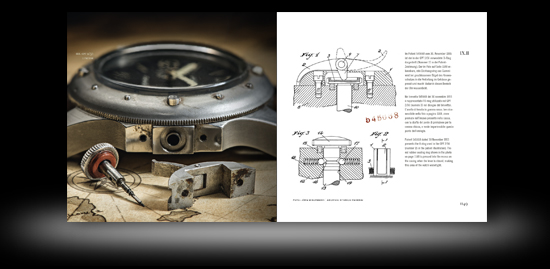
Page 1148-1149 – patent 545668 (dated 30 November 1955) presents the O-ring used in the GPF 2/56.
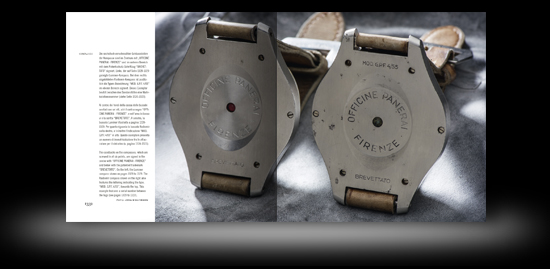
Page 1332-1333 – the casebacks on the compasses, which are screwed in at six points, ar signed in the center with „OFFICINE PANERAI – FIRENZE“ and below with the patented trademark „BREVETTATO“. The Radiomir compass on the right also features the „MOD. G.PF. 4/55“.
 “The References” 1950’s-1960’s at a glance:
“The References” 1950’s-1960’s at a glance:
37 Vintage Panerai watches from the 1950’s to 1960’s. Featured References: 6152, 6154, 6152/1, GPF 2/56 and modified References, compasses and depth gauges followed by an overview of the straps and buckles used in this era.
26 x 26 cm, 696 pages, trilingual (German, Italian and English language in one book), 27 database charts, 353 illustrations, including rare historic photos from Italian and Egyptian frogmen, hardback jacket, slipcase.
Visit our bookstore and enjoy reading soon!
A look into our book “The References” 1930’s-1940’s
by Volker on Dec.23, 2023, under Allgemein
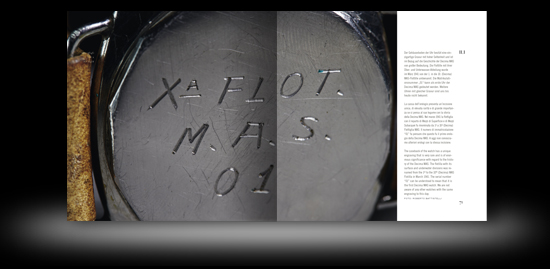
Page 70-71 – engraved caseback of a Ref. 3646 / Type A “Radiomir Panerai”.
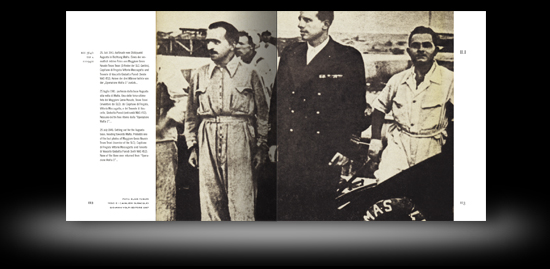
Page 112-113 – 25 July 1941: „Operazione Malta 1“ – setting out for the Augusta base, heading towards Malta: Teseo Tesei (SLC), Vittorio Moccagatta and Giobatta Parodi (MAS 452).
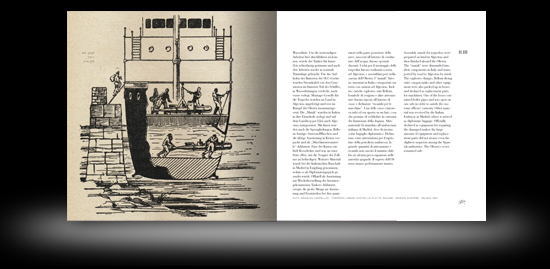
Page 358-359 – contemporary illustration of SLC missions starting from the “Olterra” in the Bay of Gibraltar (1942 and 1943).
 “The References” 1930’s-1940’s at a glance:
“The References” 1930’s-1940’s at a glance:
33 Vintage Panerai watches, history, instruments and straps of the 1930’s-1940’s. Featured References: 2533, 3646, the Mare Nostrum chronograph and compasses.
26 x 26 cm, 696 pages, trilingual (German, Italian and English language in one book), 19 database charts, 383 illustrations, including rare historic photos from the 2nd World War, hardback jacket, slipcase.
Visit our bookstore and enjoy reading soon!
18 December 1941 – today in history…
by Volker on Dec.18, 2023, under Allgemein
After the failed missions in August and September 1940, the Decima MAS returned to the eastern Mediterranean in order to make another attemp to attack the Harbour of Alexandria with SLC devices of the Mezzi d’Assalto: “Operazione G.A.3”, carried out by Tenente di Vascello Luigi Durand de la Penne and Capo Palombaro I Emilio Bianchi (SLC 221), Capitano Genio Navale Antonio Marceglia and Sottocapo Palombaro Spartaco Schergat (SLC 222), Capitano Armi Navale Vincenzo Martellotta and Sottocapo Palombaro Mario Marino (SLC 223).
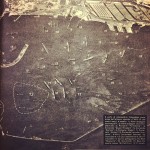 What turned out to be one of the most famous SLC missions in the Second World War has been announced in the Italian War Bulletin N. 585 of the 8th of January 1942: “On the night of the 18th December assault craft of the Italian Royal Navy entered the Harbour of Alexandria and attacked two British battleships anchored there. It has only just been confirmed that a battleship of the Valiant class was seriously damaged and put into dock for repairs, and is still there.”
What turned out to be one of the most famous SLC missions in the Second World War has been announced in the Italian War Bulletin N. 585 of the 8th of January 1942: “On the night of the 18th December assault craft of the Italian Royal Navy entered the Harbour of Alexandria and attacked two British battleships anchored there. It has only just been confirmed that a battleship of the Valiant class was seriously damaged and put into dock for repairs, and is still there.”
Bulletin N. 586 of the 9th of January 1942, added the following: “In the Operation conducted by assault craft fo the Royal Italian Navy in the Harbour of Alexandria and reported in yesterday’s Bulletin we now have definite further intelligence that, in Addition to the Valiant, a second battleship of the Barham class was also damaged.”
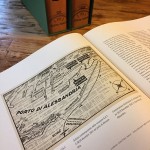 Winston Churchill announced in a speech before a secret session of the House of Commons on the 23rd of April 1942: “A further sinister stroke was to come. On the early morning of December 19 half a dozen Italians in unusual diving suits were captured floundering about in the Harbour of Alexandria… Four hours later explosions occurred in the bottoms of the Valiant and the Queen Elizabeth, produced by limpet bombs fixed with extra-ordinary courage and ingenuity, the effect which was to blow large holes in the bottoms of both ships and to flood several compartments, thus putting them both out of Actions for many months…”
Winston Churchill announced in a speech before a secret session of the House of Commons on the 23rd of April 1942: “A further sinister stroke was to come. On the early morning of December 19 half a dozen Italians in unusual diving suits were captured floundering about in the Harbour of Alexandria… Four hours later explosions occurred in the bottoms of the Valiant and the Queen Elizabeth, produced by limpet bombs fixed with extra-ordinary courage and ingenuity, the effect which was to blow large holes in the bottoms of both ships and to flood several compartments, thus putting them both out of Actions for many months…”
Read chapter II.I of our book “The References” 1930’s-1940’s to find out what happened on 18 December 1941 (page 118-125). More on the historic content in our “The References” book set with a total of 1392 pages can be found here and here. You can purchase “The References” 1930’s-1940’s in our bookstore. Enjoy reading!
Hammer’s Ref. 3646 / Type B is up for auction
by Volker on Nov.25, 2023, under General
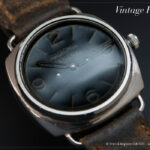 Sotheby’s New York will auction a Ref. 3646 / Type B with riveted plastic dial in their Important Watches sale on 7 December 2023.
Sotheby’s New York will auction a Ref. 3646 / Type B with riveted plastic dial in their Important Watches sale on 7 December 2023.
This 3646 is well known in the paneristi community and has been consigned by our dear friend Hammer along with other watches from his personal collection. You can read more on this rare Ref. 3646 / Type B “Radiomir Panerai” from 1941 here in our watch point.
[Photo courtesy of Martin Wilmsen]
Sotheby’s New York to auction a Ref. 3646 / Type B
by Volker on Nov.25, 2023, under Watch Point
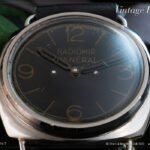 Sotheby’s New York will auction a rare Ref. 3646 / Type B with riveted plastic dial – read more at their website here.
Sotheby’s New York will auction a rare Ref. 3646 / Type B with riveted plastic dial – read more at their website here.
This specimen is one of only 21 Ref. 3646 / Type B watches known in our database until today. It has been recorded in 2013 and still remains the watch with the lowest case number within all known Ref. 3646 / Type B watches, bearing the small Oyster Watch Co hallmark on the inside of the caseback (“full polish” decoration) with its seven-digit casing reference number and the reference number 3646. You can read more on our 3646 caseback classification here.
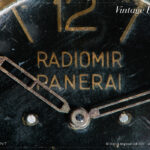 The watch is fitted with a riveted plastic dial, which has a smaller diameter than the sandwich dials, visible by the little gap between dial and (high) bezel. It bears the famous “Radiomir Panerai” writing below 12 o’clock. The surface of the plastic dial has become distorted over time. The luminous material under the surface in the numerals and indices appears lightly raised, while the other areas have become recessed (see also photo here).
The watch is fitted with a riveted plastic dial, which has a smaller diameter than the sandwich dials, visible by the little gap between dial and (high) bezel. It bears the famous “Radiomir Panerai” writing below 12 o’clock. The surface of the plastic dial has become distorted over time. The luminous material under the surface in the numerals and indices appears lightly raised, while the other areas have become recessed (see also photo here).
The watch is fitted with a Rolex crown (Type 13) with “Oyster Patent +” lettering. The steel hands on this watch have become competely skeletonized. The dodecagonal caseback of the watch does not have an outer engraving. The 47 mm steel case has the typical breadth of the curved strap loop, a common feature on watches from the early series (Type A to Type C) visible in the photo below.
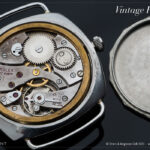 Features of the watch:
Features of the watch:
Reference: 3646 / Type B
Dial: “Radiomir Panerai” (sandwich, riveted plastic dial)
Case number: 1009XXX
Movement: Rolex Cal. 618 / Type 1
We have featured this watch in our book “The References” 1930’s-1940’s in chapter II.II on page 173-189. It was one of several historic Panerai watches Hammer provided to us in 2014 to be featured in our books. We hope our friend’s beloved 3646 will find a good new home and that it remain surfaced in the Vintage Panerai collectors world. [Ralf Ehlers & Volker Wiegmann]
[Photos courtesy of Martin Wilmsen]
“Il cavallo di Troia” – the secret SLC base
by Volker on Nov.23, 2023, under Allgemein
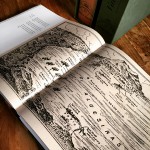 Enemy ships in the harbour of Gibraltar have been in the sight of the Royal Italian Navy since September 1940. After several attacks by “Gamma” frogmen and SLC units, ideas to build a secret base of the Decima MAS were realized in the second half of the year 1942. Convoy ships for the United States were beginning to arrive in quantity. The numbers of potential targets at anchor in the Bay of Algeciras were growing almost daily.
Enemy ships in the harbour of Gibraltar have been in the sight of the Royal Italian Navy since September 1940. After several attacks by “Gamma” frogmen and SLC units, ideas to build a secret base of the Decima MAS were realized in the second half of the year 1942. Convoy ships for the United States were beginning to arrive in quantity. The numbers of potential targets at anchor in the Bay of Algeciras were growing almost daily.
Earlier in 1942, a base for the Decima MAS “Gamma” frogmen was established in the Villa Carmela near La Linea from where several missions were carried out against British merchant ships (see page 126-131 / chapter II.I). During the months of shaping Villa Carmela into an advanced base, the idea for a bigger and much more effective operation had taken form in the mind of Licio Visintini, one of the SLC pilots of the mission B.G.4 in September 1941 (see page 374-381 / chapter II.III) which was carried out from the submarine Scirè.
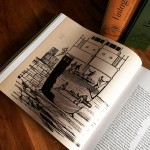 Before the new base was ready for action, each attack at Gibraltar had required a long submarine voyage, air and land transportation of the attack-teams, the shipping of supplies and weapons, arrangements for rendezvous, an approach by submarine, and finally the task of smuggling the survivors back to Italy thru neutral Spanish territory.
Before the new base was ready for action, each attack at Gibraltar had required a long submarine voyage, air and land transportation of the attack-teams, the shipping of supplies and weapons, arrangements for rendezvous, an approach by submarine, and finally the task of smuggling the survivors back to Italy thru neutral Spanish territory.
Licio Visintini’s idea became real with turning the anchored ship Olterra inside the pier of Algeciras into a secret base for SLC missions. Visintini and further technical specialists replaced the original crew of the Olterra. An assembly workshop for the SLC devices (which arrived in sections, declared as spare parts for the damaged ship) was established in the hull. A portside cabin of the Olterra became the observation post with an excellent view of Gibraltar harbour. Finally, a folding door on the port side bow (see coffee table shot of page 386-387 /chapter II.III) became the exit door for the SLC units below waterline to reach their targets – and to return back into the hull of the Olterra. After months of intensive work in total secrecy, the inconspicious ship Olterra was turned into a Trojan Horse – “il cavallo di Troia” – and six men were ready for action with their SLC devices.
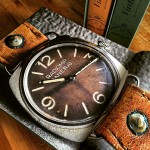 The Olterra was starting point of the following SLC missions against enemy ships in the bay of Algeciras / Gibraltar harbour: B.G.5 (7/8 December 1942), B.G.6 (7/8 May 1943) and B.G.7 (3/4 August 1943). Our book “The References” 1930’s-1940’s features two Ref. 3646 watches which were used during these missions.
The Olterra was starting point of the following SLC missions against enemy ships in the bay of Algeciras / Gibraltar harbour: B.G.5 (7/8 December 1942), B.G.6 (7/8 May 1943) and B.G.7 (3/4 August 1943). Our book “The References” 1930’s-1940’s features two Ref. 3646 watches which were used during these missions.
The Ref. 3646 / Type A “Radiomir Panerai” watch of Ernesto Notari is featured in chapter II.I (page 58-91 / see coffee table shot on the left) – more on this watch and its history can be found here. The Ref. 3646 / Type C “Radiomir Panerai” watch of Licio Visintini is featured in chapter II.III (page 350-367) – more on this watch and the history behind can be found here. The new “The References” books can be ordered only in our bookstore.
Enjoy reading!
[Ralf Ehlers & Volker Wiegmann]
18 November 1944 – today in history…
by Volker on Nov.18, 2023, under Allgemein
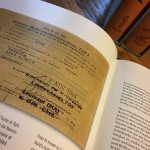 Read chapter VII of our book “History2” to find out what happened on 18 November 1944. Rare documents helped us to capture the history behind a Ref. 3646 / Type D “Kampfschwimmer” watch, which can be found in this chapter.
Read chapter VII of our book “History2” to find out what happened on 18 November 1944. Rare documents helped us to capture the history behind a Ref. 3646 / Type D “Kampfschwimmer” watch, which can be found in this chapter.
Beside photos from the years 1944 and 1945 showing the watch on the frogman’s wrist, as well as his identification papers and travel documents issued in Venice (see photo), helped us to reconstruct the route Hanns-Martin Kaufhold took to the mission grounds in the last months of the Second World War.
Read more about chapter VII of “History2” (70 pages, 58 photos, 6 technical illustrations) here. and here. You can purchase your copy of “History2” in our bookstore.
Special Offers in our Bookstore!
by Volker on Nov.09, 2023, under Allgemein
We offer bundles of both, “The References” (1930’s-1940’s and 1950’s-1960’s), “History” (volume 1 and 2) and also the Complete Library 4 Volumes with special prices where you can save up to 171 Euros!
You can purchase the special offers in our bookstore now!
30 October 1940 – today in history…
by Volker on Oct.30, 2023, under Allgemein
1940. The first mission against the Port of Gibraltar (B.G.1) was aborted when it became clear that the British fleet had already left for Operation “Menace”. The transport submersible Scirè under the command of Junio Valerio Borghese was still 50 nautical miles off Gibraltar. Disappointed, the SLC teams returned to their secret base at Bocca di Serchio, where they intensively discussed the feasibility of this type of attack. This happened at the same time when „Operazione G.A.2“ was about to end with the sinking of the transport submersible Gondar.
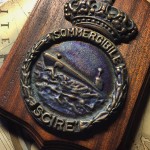 Initial, decisive proof of the feasibility and the successful, secret penetration of enemy ports was achieved by Comandante Borghese and his men in mission B.G.2. Again, three SLCs were dispatched: Teseo Tesei with Alcide Pedretti, Luigi Durand de la Penne with Emilio Bianchi and Gino Birindelli with Damos Paccagnini.
Initial, decisive proof of the feasibility and the successful, secret penetration of enemy ports was achieved by Comandante Borghese and his men in mission B.G.2. Again, three SLCs were dispatched: Teseo Tesei with Alcide Pedretti, Luigi Durand de la Penne with Emilio Bianchi and Gino Birindelli with Damos Paccagnini.
The Scirè came into position at around 1.30 a.m. on 30 October 1940 in order to allow the SLC teams to disembark from the conning tower of the submersible. The Scirè only remained at the surface for a short time so that the three SLC teams could reach the cylindrical pods on the deck of the submersible. The Scirè then retreated back beneath the surface. Under water, the three teams manoeuvred their SLCs out from the pods and started their attack on the Port of Gibraltar. The three teams experienced problems almost as soon as the attack began. While Tesei and his co-pilot Pedretti had problems with their breathing apparatus, Durand de la Penne and his co-pilot Bianchi experienced problems with their electric engine. Both teams decided to abort the attack and sink their SLCs. However, only De la Penne managed to do this. Tesei’s SLC was washed up on the Spanish coast near La Linea and caused quite a stir among both the Spanish authorities and the British secret service. Both teams swam to the Spanish coast and were able to return safely to Italy with the help of the Italian secret service.
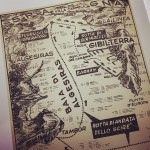 The fate of the entire operation now lay in the hands of Gino Birindelli and his co-pilot Damos Paccagnini. Unaware of the fact that their comrades-in-arms had already had to terminate their mission, they launched their attack on the Port of Gibraltar. Although mission B.G.2 was in principle a failure because not one enemy ship was sunk, Birindelli and his co-pilot Paccagnini were able to prove for the first time that a “maiale” was able to enter an enemy port unnoticed.
The fate of the entire operation now lay in the hands of Gino Birindelli and his co-pilot Damos Paccagnini. Unaware of the fact that their comrades-in-arms had already had to terminate their mission, they launched their attack on the Port of Gibraltar. Although mission B.G.2 was in principle a failure because not one enemy ship was sunk, Birindelli and his co-pilot Paccagnini were able to prove for the first time that a “maiale” was able to enter an enemy port unnoticed.
„Operazione B.G.2“ marked the start of a three year war that took place noiselessly and under water in the Bay of Gibraltar. For Gino Birindelli, however, the mission marked the start of a journey through Allied POW camps that would last many months. Read more on mission B.G.2 and the story of Gino Birindelli in our book “The References” 1950’s-1960’s in chapter VIII.II on page 1014-1043.
Visintini’s 3646 / Type C “Radiomir Panerai”
by Volker on Oct.20, 2023, under Allgemein
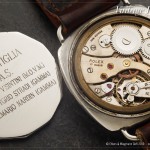 A watch of the Reference 3646 / Type C which belonged to the SLC pilot Licio Visintini is featured in chapter II.III. Visintini took part in several missions against the allied fleet in Gibraltar.
A watch of the Reference 3646 / Type C which belonged to the SLC pilot Licio Visintini is featured in chapter II.III. Visintini took part in several missions against the allied fleet in Gibraltar.
After surviving from mission B.G.3 and B.G.4 in 1941, Visintini returned undercover to Gibraltar in June 1942 where he built the core of the “Orsa Maggiore” on board the tanker Olterra – the hidden base for the SLC units of the “Decima” in the bay of Gibraltar. Mission B.G.5 turned into a “mission with no return” for Licio Visintini in December 1942…
The documentation of the watch (engraved caseback and view into the movement shown above) and the history of Licio Visintini can be read from page 350 to 397 in chapter II.III.
Information on “The References” 1930’s-1940’s (first volume) can be found here.

